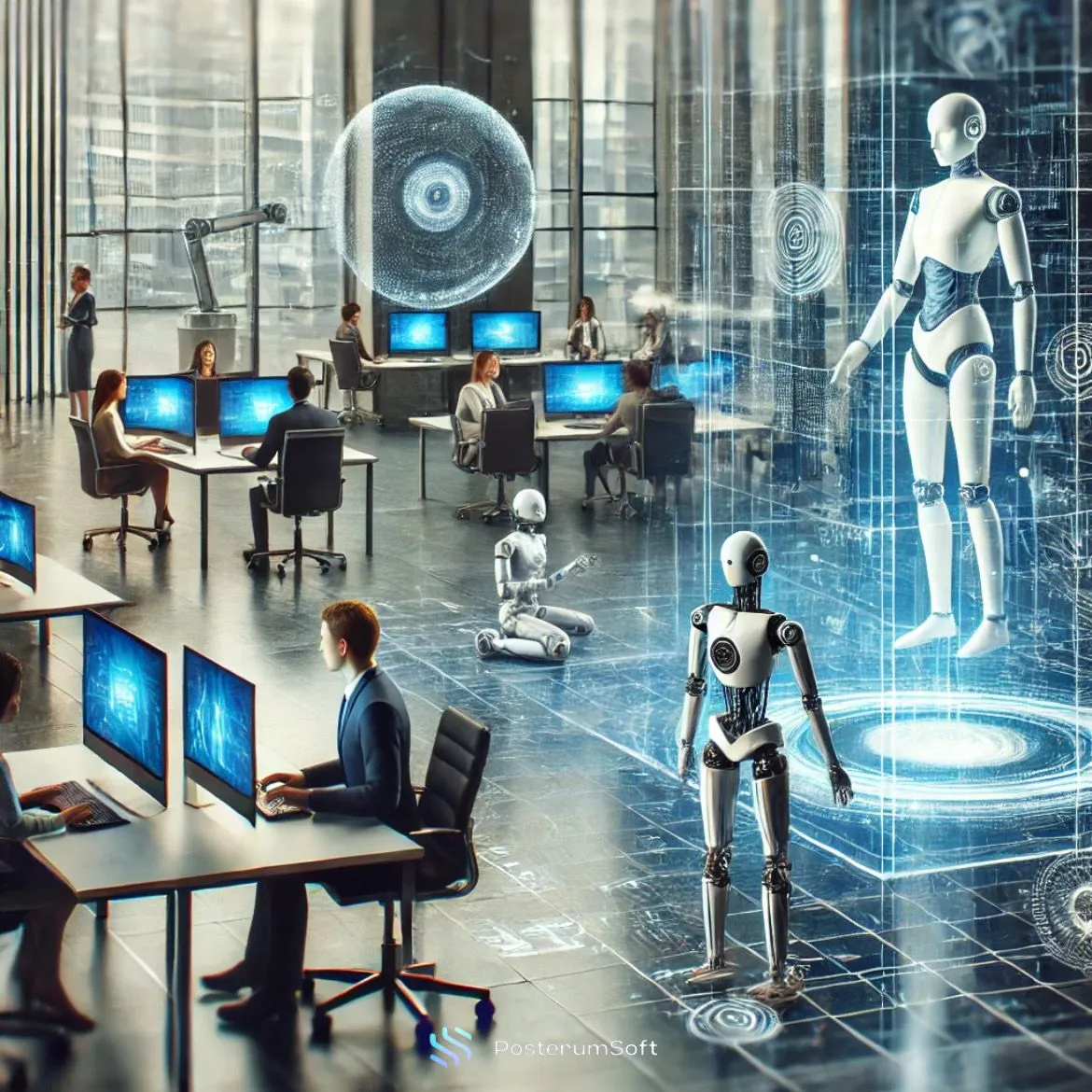
Why UX/UI Design is Critical for Your Product’s Success
Discover why UX/UI design plays a crucial role in the success of digital products and how it impacts user attraction, conversion, and business growth...
Oct 4, 2024

Technology plays an increasingly important role in our daily lives, and its impact on education is becoming more apparent. We live in an era where learning opportunities extend far beyond traditional classrooms. E-learning is not just a trend; it is a fundamental shift that affects all aspects of the educational process, from how students receive knowledge to how teachers interact with them.
As an IT company, PosterumSoft is deeply involved in creating technological solutions for the education sector and business, helping organizations make the most of the potential of online learning. In this article, we will explore how technology is reshaping education and future developments for e-learning.
Traditional educational systems rarely take individual student needs into account. This often leads to students losing interest in their studies or struggling with the material. However, technology, particularly artificial intelligence (AI), is changing this approach by offering each student a personalized learning experience.
AI-powered systems can adapt the learning process to each student’s specific needs. E-learning platforms, for example, can provide content based on the student’s level of knowledge, learning pace, and preferences. This is especially useful in large classrooms or groups, where it’s challenging for a teacher to give individual attention to every student.
Personalization also helps boost student motivation. When they see that the education is tailored to their interests and abilities, they become more engaged in the process. In the future, we can expect to see more adaptive platforms offering educational programs based on data analysis, ensuring the most effective learning paths for each student.
Virtual reality (VR) and augmented reality (AR) technologies already provide innovative learning methods that significantly expand the boundaries of traditional education. VR allows students to immerse themselves in interactive 3D worlds, whether studying ancient civilizations, traveling into the microcosm to explore cells, or simulating real-world scenarios for practical skills.
These technologies provide tremendous opportunities for both students and educational companies. For example, university engineering and medical faculties can use VR to simulate surgeries or model complex machinery. In the corporate sector, VR can be the foundation for deeper employee training, such as safety training, production simulations, or learning in hazardous environments.
AR, conversely, allows digital content to be integrated into the real world. Textbooks enhanced with AR graphics can bring text and illustrations to life, making learning material more engaging. This helps create a deeper understanding of complex concepts and increases student engagement.
With the development of mobile technologies, learning is becoming even more flexible and accessible. Modern e-learning platforms offer educational programs available on any device — smartphones, tablets, or laptops. This opens up significant opportunities for continuous learning, regardless of where the student is.
Mobile learning solutions are essential for school students and professionals who should maintain and expand their knowledge in a constantly changing job market. Companies providing corporate training programs increasingly use mobile platforms to upskill their employees.
In the future, we can expect further development of mobile educational apps, integrating AI technologies, data analysis, and automated learning programs. This will make it possible to create highly personalized and effective educational experiences for students and professionals alike.
The use of AI in educational technology goes beyond personalized content; it is also revolutionizing administrative and academic processes through automation. AI can automate tasks such as grading exams, assessing assignments, and developing curriculum plans. This frees teachers from routine tasks, allowing them to focus on more important aspects such as creative teaching and individual student engagement.
AI can also analyze student performance data and provide teachers with recommendations for improving the learning process. For example, a system may identify a particular group of students struggling with a specific topic and suggest additional materials or alternative teaching methods.
For companies involved in online education, automation helps reduce administrative costs and focus on creating high-quality content. In the future, these technologies will become even more critical, helping educational institutions and businesses enhance their programs and raise education standards.
With the rise of cloud technologies, educational institutions can store vast amounts of data and provide students and teachers worldwide with learning materials. This has opened the door to hybrid learning, which combines traditional classrooms with online courses and interactive platforms.
Cloud solutions simplify access to educational materials and reduce infrastructure costs. Students can work with materials whenever they want, and teachers can easily update and distribute content. Cloud platforms also play a crucial role in ensuring data security, which is vital for educational institutions and organizations.
Hybrid forms of learning, which became especially popular after the COVID-19 pandemic, will remain a key part of the educational landscape in the future. They offer flexibility and convenience, making the learning process more efficient and accessible for students and teachers.
Data analytics has become an essential tool for educational institutions and businesses, allowing them to track student progress, analyze behavior, and adjust curricula. Big data provides the ability to monitor student performance, predict potential challenges they may face, and take action to prevent them.
With analytics, institutions can identify which topics are most challenging, which learning formats are most effective, and how to improve the teaching process. This is especially important for companies engaged in corporate training, where responding quickly to market changes and adapting programs to new requirements is necessary.
For universities and schools, analytics allows for the generation of more adaptive and personalized programs that meet the needs of students and help them achieve better results. In the future, big data will play an even more critical role in shaping educational strategies and improving the quality of learning.
Technology is also creating new opportunities for social learning and collaboration. Modern e-learning platforms include features that foster interaction between students, teachers, and experts in various fields. Online forums, chats, and video conferencing allow students to discuss learning materials, ask questions, and share ideas in real-time.
These forms of interaction are highly beneficial for corporate training, where employees can exchange experiences and work on projects in teams, regardless of their geographical location. For universities and schools, this is an opportunity to create virtual communities that help develop teamwork and collaboration skills.
Technology continues to evolve rapidly, and the future of e-learning looks promising. We are witnessing how artificial intelligence, VR and AR, mobile apps, cloud solutions, and big data are changing the learning process, making it more personalized, flexible, and accessible.
PosterumSoft is actively working on creating solutions that help educational institutions and companies keep pace with these changes. We believe that the future of education is not just new technologies but new approaches that prioritize the individual needs and success of students.
Follow PosterumSoft on LinkedIn: linkedin.com
Follow PosterumSoft on X: x.com
Follow us on Medium: medium.com
Our Upwork: upwork.com

Discover why UX/UI design plays a crucial role in the success of digital products and how it impacts user attraction, conversion, and business growth...

Explore the trends, challenges, and opportunities of AI/ML integration in business by 2025.